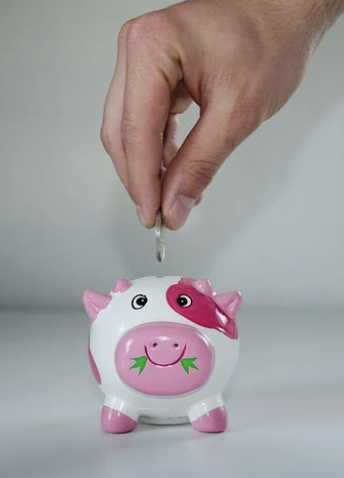TIGHTEN UP
Courtesy of Grant's Almost Daily
 ?Is an interest rate regime change finally underway? Today the 10- and 30-year Treasury yields each hit their highest levels in more than one year at 1.36% and 2.17%, respectively. Globally, the stock of nominal negative yielding debt fell to near $14 trillion on Friday, down from more than $18 trillion in mid-December.
?Is an interest rate regime change finally underway? Today the 10- and 30-year Treasury yields each hit their highest levels in more than one year at 1.36% and 2.17%, respectively. Globally, the stock of nominal negative yielding debt fell to near $14 trillion on Friday, down from more than $18 trillion in mid-December.
Signs of a renewed economic boom, in tandem with pockets of price pressure, color that move in rates. Bianco Research notes today that Wall Street economists now expect U.S. real GDP growth of nearly 5% this year (a rapid pace “more commonly found in developing countries”), up from guesstimates of 3.7% in early November. Today the Bloomberg Commodity Spot Index closed at its highest level since early 2013, up 67% from its March lows.
Investors are buying the reflation story. The Bank of America Global Fund Manager Survey for February finds that sentiment for global growth has reached a record peak with allocations to stocks and commodities each at their highest level since 2011, while cash holdings declined to a near-eight year low. As for tail risks to the market, inflation and a reprise of the 2013 “taper tantrum” yield spike were two of the three most-cited potential pitfalls.
Of course, Washington’s two-pronged stimulus charge figures prominently in that thesis, as interest-bearing assets on the Fed balance sheet have jumped 80% from last year, while Uncle Sam ran a budget deficit equivalent to 15% of output in fiscal 2020, a gap exceeded only in 1864, 1919 and 1943 to 1945 (each era coincided with or was soon followed by a fast-rising price level). But, as inflation takes hold as the Wall Street consensus, economic policymakers see nothing of the sort.
According to the minutes from the January FOMC meeting released last week, most committee members “still viewed the risks [to inflation] as weighted to the downside.” “There are disinflationary pressures that are quite profound and seem to be continuing,” Richmond Fed president Thomas Barkin (currently a voting member on the Federal Open Market Committee) today told the Maryland Bankers Association. Deeply ingrained psychological factors will reign supreme, Barkin believes. “As long as you’ve got those disinflationary headwinds, it’s just going to be hard for businesses to believe that you’re going to have the market power to increase prices.”
Similarly, Treasury Secretary Janet Yellen downplayed the chances of inflationary resurgence in a CNBC interview Thursday, instead advocating for a continued stimulus by arguing that, “if properly measured,” the headline unemployment rate would be closer to 10% than the current 6.3% (the fidelity of the Fed’s preferred inflation gauge, the personal consumption expenditures index, went unmentioned). “The price of doing too little is much higher than the price of doing something big,” she concluded.
As the powers that be get set to add more stimulus to the mix, sufficient tinder for a monetary bonfire is perhaps already in place. M2 money supply jumped an eye-popping $4 trillion, or 26%, in the 12 months through February. That’s up from a 5.8% average annual growth rate in the decade ending 2019 and the largest uptick since 1943.
Fresh currency continues to flow in 2021. Writing today in The Wall Street Journal, Invesco chief economist John Greenwood and Johns Hopkins University professor Steve Hanke calculate that, even with no additional loan growth or corporate borrowing, M2 is set to jump another 12% this year thanks to Fed asset purchases and runoff in the Treasurys General Account, which will be allocated toward federal spending initiatives. The pair conclude that the M2 growth rate “spells trouble – inflationary trouble.”
Might policymakers, firmly believing that they control economic events, find that events in fact control them? Bianco Research president and eponym Jim Bianco put it this way to Grant’s last week:
The point is, the last two policy changes have been market-driven. The market takes a big right turn or left turn, and the Fed is forced to react to it. And, so, when the Fed says . . . we could let the average inflation rate run above 2% . . . we don’t have to raise rates. I keep screaming, ‘It’s not your call. It’s the market’s call. If you let inflation go up to 2.5% and the markets are okay with it, you’re okay with it. If inflation goes up to 2.5% and the market throws a fit, you’re 10 days away from raising rates. You just don’t know [that] you are yet.’
For a survey of potentially profitable strategies to help weather today’s extreme monetary backdrop, see the new issue of Grant’s Interest Rate Observer dated Feb. 19.
RECAP FEB. 22
Stocks came under pressure, with the S&P 500 losing 75 basis points to log its fifth straight red session after reaching a fresh high-water mark on Feb. 12, while ongoing weakness in long-dated Treasurys pushed the yield curve, as measured by the gap between the two- and 10-year notes, to its steepest since March 2017. WTI crude jumped back to near $62 a barrel for the first time since November 2018, gold rallied by nearly 2% to $1,807 an ounce, and the VIX rose to 23.5, up 6% on the day.
– Philip Grant



